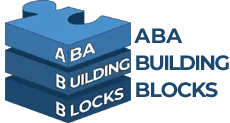Are you finding it increasingly difficult to grapple with the intricacies of healthcare billing? Are unpaid claims, inefficient coding, and complex billing processes affecting your financial stability? You’re not alone. In the highly regulated and often complex realm of healthcare, efficient management of the revenue cycle can make or break a practice. Revenue Cycle Management (RCM) in medical billing is an intricate business process that helps healthcare organizations like ours at ABA Building Blocks to get paid for the services we provide. It comprises 17 unique steps, which begin with patient scheduling and ends with payment reconciliation. Incorrect or mismanagement of this cycle can lead to avoidable denials, bad debts and an uncertain financial future.
At its core, RCM represents a detailed interaction with patients that includes myriad touchpoints. The process can be broadly categorized into three phases: Order to Intake, Care to Claim, and Claim to Payment. Effective RCM ensures that every interaction with a patient, right from the initial inquiry up until the final payment, is managed efficiently. It involves collecting the right information, ensuring patients are only billed for services provided, and engaging with third-party payers in a timely manner to facilitate payment collections.
Here’s a snapshot of the essential elements of RCM in medical billing:
- Scheduling and appointment of the patient
- Successful patient registration
- Verification of insurance eligibility and benefits
- Review of utilization
- Referral and authorization process
- Valid charge description
- Accurate and compliant coding and billing
Understanding and implementing RCM in healthcare is no mean feat, but it’s a critical aspect for the survival and growth of any healthcare organization. This is just the beginning of our deep-dive into exploring RCM. Buckle up for an informative journey into RCM in medical billing.
Understanding the Importance of RCM in Healthcare
The importance of Revenue Cycle Management (RCM) in healthcare cannot be overstated. It’s a crucial backbone of any healthcare provider’s financial health, and it directly impacts the quality of care provided to patients. Let’s delve into why RCM is so pivotal.
The Role of RCM in Ensuring Timely and Efficient Reimbursement
As our expert at ABA Building Blocks, Kim Finger, Ph.D., often explains, the primary role of RCM in healthcare is to ensure that healthcare providers are reimbursed in a timely and efficient manner for the services they deliver. This process begins when the patient schedules an appointment and continues until the healthcare provider has received full payment for the rendered services.
RCM involves a range of tasks, from gathering the patient’s demographics and verifying insurance benefits to submitting claims and handling any rejections or denials. These tasks require careful attention to detail, understanding of complex medical codes, and knowledge of payer guidelines and claim requirements.
Without an efficient RCM process, healthcare providers run the risk of delayed or lost claim reimbursements, which can have a cascading effect on the quality of care provided.
The Impact of RCM on Quality of Care and Payer Requirements
RCM is not just about getting paid; it also plays a critical role in the quality of care provided to patients. A streamlined RCM process ensures that healthcare providers have the necessary resources such as staffing, finances, policies, and procedures, and efficient electronic health record (EHR) systems. These resources are vital for achieving the care quality metrics required by commercial and government payers.
A lack of resources can pose serious risks for healthcare providers, including fewer administrative staff to handle new and returning patients, lower patient volumes, and potential non-compliance issues. Therefore, a robust RCM process is as crucial to quality care as quality care is to a successful practice.
Moreover, understanding and adhering to the stipulations of commercial and government payers is a crucial part of RCM. Providers must be aware of any service limitations or disclaimers, prior authorizations requirements, and the correct use of medical codes to ensure they are correctly reimbursed for their services.
Our team at ABA Building Blocks is well-versed in understanding the complexities of RCM in medical billing. We recognize its importance not just for the financial health of healthcare providers, but also for the quality of care delivered to patients. In the next section, we will be diving into the RCM process in detail to provide you with a more comprehensive understanding of its different aspects.
The RCM Process in Detail
Navigating the complex world of RCM in medical billing can be challenging, but understanding its intricacies is crucial for the health of your practice. In this section, we’ll break down the process into its three main phases and highlight the critical tasks involved.
The Three Phases of RCM: Order to Intake, Care to Claim, and Claim to Payment
At its core, the revenue cycle in healthcare is a journey that begins with a patient scheduling an appointment and ends with payment reconciliation. This journey can be divided into three main phases:
- Order to Intake: This phase involves scheduling patient appointments and registering them for their visits. It’s the first step in establishing a financial record for the patient’s care.
- Care to Claim: In this phase, the healthcare services provided are documented, coded, and transformed into a claim that can be submitted to insurance payers.
- Claim to Payment: This final phase entails submitting the claim to the payer, managing any denials or rejections, and ultimately reconciling and collecting the payment.
By understanding these phases, we can better manage the RCM process, ensuring that every step is efficiently carried out and every dollar is accounted for.
Front-End Tasks: Scheduling, Registration, and Insurance Eligibility Verification
The front-end tasks in RCM are all about laying a solid foundation for the billing process. It starts with scheduling the patient’s appointment and registration, where essential demographic and insurance information is collected. This is a crucial step as it lays the groundwork for the billing process.
Next is insurance eligibility verification, which is vital for preventing claim errors and denials. This task involves confirming the patient’s insurance coverage and understanding the specifics of their plan, including co-pays, deductibles, and coverage limits. Automating this process can prevent claim errors and make patients aware early on regarding any payment responsibilities they may have.
Back-End Tasks: Documentation, Coding, Claim Submission, and Payment Reconciliation
The back-end tasks in RCM revolve around documentation, coding, and the actual claim submission. Proper documentation of the medical services provided, using customized EMR templates, ensures accurate and efficient charge capture.
Next, coding transforms the documented services into the appropriate medical codes, which are then used to create the claim. This requires a well-trained staff proficient in medical coding and understanding their role in the revenue cycle process.
Once the claim is prepared, it’s submitted to the insurance payer. This is followed by payment reconciliation, where payments are posted to patient accounts, and any discrepancies are resolved.
At ABA Building Blocks, we understand that these processes can be tedious and time-consuming, especially for small practices. We offer full RCM services to manage these tasks for you, allowing you to focus more on delivering quality care.
By understanding and effectively managing the RCM process from start to finish, you can improve your practice’s financial health. In the next section, we’ll explore some common challenges in RCM and how to overcome them.

Challenges in RCM and How to Overcome Them
In RCM in medical billing, numerous challenges can arise. These can impact the efficiency of your practice, delay payments, and ultimately affect your bottom line.
Common Issues: Data Entry Accuracy, Identifying Proper Payers and Codes, Claim Rejections, and Patient Payment Collection
One of the most common issues is data entry accuracy. Mistakes in patient information or insurance details can lead to claim rejections or delays in payment.
Identifying the proper payers and codes is another challenge. There are numerous medical codes, and using the wrong one can result in claim denials.
Claim rejections are a significant hurdle. They occur when a claim doesn’t meet certain standards set by insurers, which can be due to a variety of reasons such as incorrect patient details, incorrect or missing codes, or expired insurance policies.
Lastly, patient payment collection can be a challenge. Often, patients don’t pay their bills promptly after receiving a statement, either due to misunderstandings about benefits, denied claims, the high cost of services, or other financial hardships.
To overcome these issues, have a well-trained team that understands the nuances of RCM. Regular training and continuous monitoring can help reduce errors and improve efficiency. Additionally, using an ABA therapy billing software, like we provide at ABA Building Blocks, can help streamline the process, reduce errors, and improve overall efficiency.
The Importance of Denial Management and Process Improvements
Managing claim denials is a crucial part of RCM. According to the American Academy of Family Physicians, having a target denial rate below 8% ensures effective revenue management and consistent cash flow.
When a claim is denied, it’s important to identify and analyze the reason, correct the denial, resubmit the claim to the payer, and make process improvements to avoid future denials.
At ABA Building Blocks, we understand the importance of denial management. Our billing services are designed to help you navigate through the complexities of denied claims and ensure you get paid for your services.
In conclusion, while challenges in RCM are inevitable, they can be managed and overcome with the right approach, tools, and team. By addressing these issues head-on and making continuous process improvements, you can enhance your practice’s financial health and ensure a smoother RCM process.
In the next section, we’ll explore how technology can help streamline RCM processes and enhance your practice’s efficiency.
The Role of Technology in RCM
In our increasingly digital world, technology plays a vital role in streamlining RCM in medical billing and enhancing the efficiency of healthcare practices. From tracking claims throughout their lifecycles to facilitating a steady stream of revenue, technology is a game-changer in healthcare revenue cycle management.
How Health IT Systems and Automation Streamline RCM Processes
Health IT systems and Electronic Health Record (EHR) systems are instrumental in refining RCM strategies. These systems automate common issues in healthcare revenue cycle management, such as payer-provider communications, recommending appropriate ICD-10 codes, monitoring medical billing processes, and even scheduling patient appointments.
Automation is especially useful in today’s remote work environment. It enables providers to track and manage claims, collect payments, and address claim denials efficiently from anywhere, anytime. Furthermore, automation reduces administrative work, thereby reducing the risk of burnout caused by tedious tasks.
By automating duties such as informing patients of upcoming appointments, reminding payers and patients of existing balances, and following up with insurers when a claim is denied, providers can save both time and money. This level of efficiency allows healthcare providers to focus more on patient care and less on administrative tasks.
The Potential of Artificial Intelligence in Enhancing RCM
Artificial Intelligence (AI) is another technological advancement that is revolutionizing RCM in medical billing. AI has the potential to monitor vast amounts of data, helping providers identify certain indications, such as why a claim was denied. It can evaluate variables associated with the RCM process, thus improving the success rate of reaching the right outcome at each step.
AI and automation also have the potential to help providers with prior authorization requirements, a critical aspect of the RCM process. By leveraging AI, providers can automate and streamline this process, ensuring faster and more accurate authorizations.
Moreover, AI can provide real-time performance analytics and timely alerts to ensure no claim is left behind. It can help providers identify missing funding by finding root causes, denial patterns, and insurance underpayments, while providing actionable insights to correct the issues.
Here at ABA Building Blocks, we believe in the power of technology to transform RCM processes. We’re excited about the future of AI in healthcare revenue management and the efficiencies it can bring to our practice.
In the next section, we’ll explore the key performance indicators (KPIs) for RCM and the role of data analytics in tracking these KPIs.
Key Performance Indicators (KPIs) for RCM
Having a thorough understanding of the operational and financial aspects of your practice is crucial for the success of your organization. To do this, you need to track certain key performance indicators (KPIs) in your RCM process. These indicators provide valuable insights into the efficiency of your revenue cycle and help identify areas for improvement.
Understanding KPIs: Clean Claim Rate, First Pass Rate, Accounts Receivable, and More
Clean Claim Rate (CCR)
The Clean Claim Rate (CCR) refers to the number of claims sent to payers without getting rejected. A high CCR suggests that the data collected and processed within the electronic health record (EHR) are of high quality, leading to accurate claims. According to industry standards, a quality CCR is anything over 95%.
First Pass Rate (FPR)
The First Pass Rate (FPR) shows how effective your practice’s RCM process is. It reflects the percentage of claims paid on the first submission without needing any amendments or resubmissions.
Accounts Receivable (A/R)
Accounts Receivable (A/R) refers to the total amount owed to your practice by patients and insurers. It’s a crucial metric to track as it directly impacts your cash flow.
Other key KPIs to track include the average days in A/R, bad debt rate, cash collection, charge lag, denial rate, and rejection rate.
The Role of Data Analytics in Tracking KPIs and Predicting Claim Results
Data analytics plays a crucial role in tracking these KPIs. By using data analytics software, you can visualize your revenue cycle, identify areas for improvement, and monitor revenue goals.
At ABA Building Blocks, we use advanced software systems that integrate with your EHR, allowing you to seamlessly track data from appointments to claims to payments. This enables us to manage the revenue cycle more efficiently, enhancing our financial health and ensuring our ability to continue providing quality care.
Through data analytics, we can also predict claim results. For instance, by analyzing trends in denied claims, we can identify common issues and rectify them, thus improving our chances of claim approval in the future.
In the next section, we’ll discuss the future of RCM in healthcare and how changes in legislation and regulatory compliance can affect RCM.
The Future of RCM in Healthcare
As the healthcare landscape continues to evolve, so too does the future of Revenue Cycle Management (RCM). This future is shaped by two significant factors: the shift towards value-based reimbursement and changes in legislation and regulatory compliance.
The Shift Towards Value-Based Reimbursement and Its Impact on RCM
Traditionally, healthcare providers have operated on a fee-for-service model, where reimbursement is based on the quantity of services provided. However, the healthcare industry is increasingly moving towards a value-based care model, where reimbursement is tied to patient outcomes. This shift is profoundly impacting the role of RCM in medical billing.
Value-based care models incentivize positive and socially significant outcomes, rewarding providers for the quality, rather than the quantity, of care provided. As a result, RCM processes will need to adapt to ensure that these outcomes are accurately captured and reported. This approach will likely bring about significant changes in how autism services, for example, are provided and reimbursed. With the focus shifting towards measured outcomes, providers will need to ensure that their interventions yield positive results for their patients.
In this new landscape, RCM plays a crucial role in providing valuable insights into practice performance and enabling better decision-making. Accurate and timely billing and collections become even more critical as reimbursement becomes increasingly tied to the quality of care provided.
How Changes in Legislation and Regulatory Compliance Affect RCM
Changes in legislation and regulatory compliance also significantly impact the future of RCM. As the Affordable Care Act and HIPAA have shown, new regulations can add complexity to the billing and collections process, making it even more crucial for practices to stay compliant.
Additionally, the Medicare Access and CHIP Reauthorization Act of 2015 (MACRA) is pushing healthcare towards value-based care and reimbursement. This legislation is reinforcing the importance of RCM systems in transitioning the industry from fee-for-service to value-based reimbursement.
In conclusion, as we navigate the future of healthcare, effective RCM becomes increasingly important. By understanding the impact of value-based reimbursement and legislative changes on RCM, we at ABA Building Blocks can better equip ourselves to navigate these changes, ensuring the financial health and sustainability of our practice.
The intricacy of RCM in medical billing cannot be overstated, and its significance in maintaining the financial health of healthcare practices is paramount. With the growing complexities in healthcare delivery and reimbursement patterns, an efficient RCM process is no longer a luxury, but a necessity.
Why RCM Matters
At its core, RCM plays a pivotal role in ensuring that healthcare providers are paid accurately and promptly for the services rendered. It bridges the gap between clinical care and administrative tasks, ensuring a smooth transition from patient intake to claim payment. Furthermore, it aids in maintaining a healthy accounts receivable, preventing and reducing unpaid claims, and improving point-of-service collections. These aspects directly impact the revenue and profit margins of healthcare practices.
Navigating through Challenges
One of the main challenges in RCM is the length of the claims process. Given the nature of healthcare, it could be months before a bill is paid in full–if it is paid at all. Furthermore, the shift from commercial payer reimbursement to direct patient responsibility, coupled with the increasing influence of government payers, adds to the complexity.
However, these challenges can be overcome with effective denial management and continuous process improvements. By identifying common reasons for denials, implementing corrective measures, and improving the accuracy of data entry, healthcare providers can significantly enhance their RCM process.
Looking Ahead
As healthcare continues to evolve, so will RCM. The shift towards value-based reimbursement is likely to change the dynamics of RCM, making it more patient-centric rather than payer-centric. Changes in legislation and regulatory compliance are also expected to affect RCM, pushing healthcare practices to be more agile and adaptable.
Embracing Technology
Technology, particularly Health IT systems, automation, and artificial intelligence, can streamline the RCM process. From automating routine tasks to predicting claim results using data analytics, technology can significantly enhance the efficacy of RCM.
Final Thoughts
In conclusion, RCM is a critical component in healthcare that ensures financial resiliency. Regardless of the size of the practice, an effective RCM process is crucial to sustain growth, mitigate operational risks, and secure a stable financial future. At ABA Building Blocks, we understand the complexities and importance of RCM in medical billing and offer comprehensive support to help practices navigate through this intricate process.
For further reading on the topic and to understand how we can assist you in your RCM journey, visit our blog or check out our billing training services.







